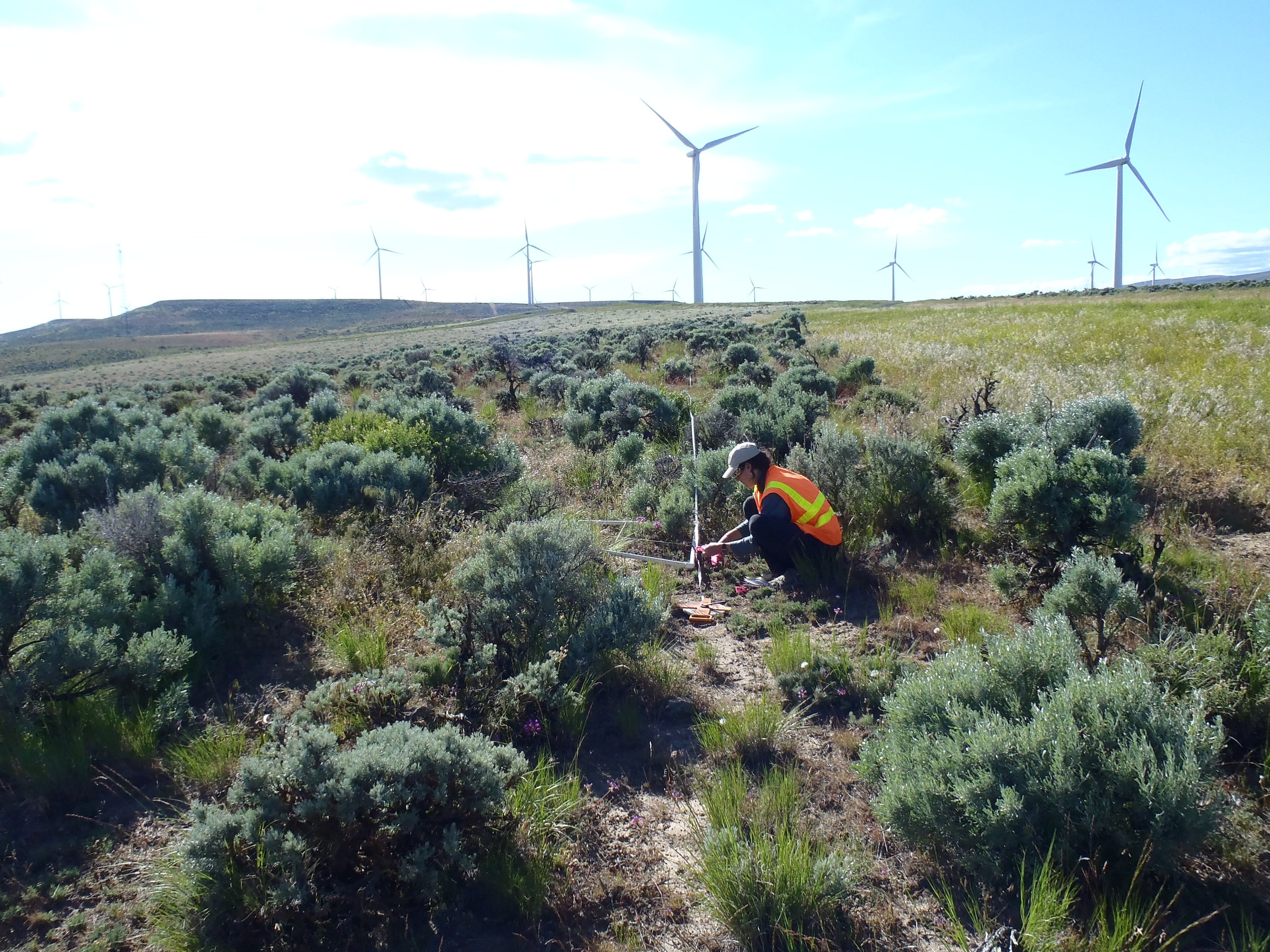
performance Monitoring
Restoration doesn’t end with planting. Maybe you have survival requirements. Or maybe you are responsible for weed control and maintenance. Whatever it is, we can help with a variety of monitoring services.
monitoring for performance standards
Between 2011 and 2015, Riley Consulting provided restoration planning and monitoring for expansion of the Wild Horse Renewable Energy Center in central Washington State. WildLands, Inc., who carried the revegetation contract for the site, subcontracted Riley Consulting to prepare a restoration plan, design a monitoring protocol and complete monitoring surveys annually for five (5) years following construction. We installed monitoring transects prior to the completion of revegetation efforts, and plots were read at approximately the same time each year (last week of May/first week of June) to avoid seasonal variations in species composition. Species were identified to the lowest possible taxonomic level, and percent cover was determined for each species as well as for native vs. non-native species, bare ground, litter and rock. Results were compared between restored and reference sites in order to determine compliance with the performance standards of the site certificate. The entire site was also visually assessed each year in order to locate any potential weed or erosion problems. A comprehensive monitoring report was prepared and submitted to the client, the wind farm owner, and the Washington Department of Fish and Wildlife (WDFW) following each survey. During the final monitoring year (2015), Riley Consulting also led a tour of restoration areas for the wind farm Technical Advisory Committee (TAC) at the request of the client, in order to provide an overview of monitoring results.
survival surveys
The Clover Island ecosystem restoration site is located along N. Clover Island Drive, on the County shoreline of the Columbia River in Kennewick, WA. Construction activities in 2021 improved visitor infrastructure and fish habitat, and installed native plants to create ~2.2 acres of xeric, mesic, riparian and wetland habitat. The site was planted and seeded in the spring of 2022 in conformance with the Landscape Planting Plan, which included a 1-year survival guarantee. Though replanting and reseeding would not need to occur until spring of 2023, there were already concerns about grass establishment and container plant survival. In order to better anticipate any transplanting or overseeding needs, the construction contractor reached out to Riley Consulting about doing a preliminary survey and assessment in November. Since it was so late in the season, and the site could be covered in snow at any time, we knew we needed to complete the survey as quickly as possible. After shuffling some things around, we were able to travel to WA and complete the survey in less than 1 week. We performed a 100% stem count of installed trees and shrubs, and visually assessed grass establishment and weed presence. A detailed report of our findings was submitted to the construction contractor and the US Army Corps of Engineers (ACOE), along with recommendations for restoration improvements. The client was pleased with our efficiency and responsiveness, and asked us to return in the spring for a final survey prior to replanting.
noxious weed surveys
In 2013, an accident caused a tanker truck to tip over and spill approximately 5,300 gallons of diesel fuel and gasoline onto the surface of Highway 26 and into the surrounding forest. The accident occurred in central Oregon, on the Warm Springs Indian Reservation. Following a major cleanup effort, an environmental restoration contractor was hired to perform native plant installation and seeding on the site. Riley Consulting was subcontracted to design a Native Plant Restoration Plan, including monitoring plans for both noxious weed presence and native plant survival. We performed weed surveys three (3) times per year during each growing season, in order to determine the presence and prevalence of noxious weed populations. These were mapped and reported to the restoration contractor promptly following each survey so that control efforts could be scheduled. Survival surveys were completed each fall, and consisted of a 100% count of all surviving plants that were installed on the site following the spill restoration. We monitored the site for three (3) years following restoration efforts, submitting detailed reports to the client following each survey that included recommendations for weed control and replanting. Weed control surveys informed ongoing weed control efforts, and helped reduce noxious weed populations substantially over the 3-year monitoring period. Survival surveys demonstrated that the site was not meeting performance thresholds for plant survival, and a supplemental planting was performed in 2015. Riley Consulting used results from survival surveys to inform the replanting effort, identifying which species were thriving on the site and recommending a more site-appropriate species list for the replant.


